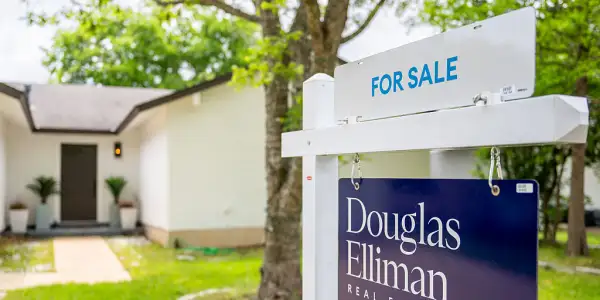May Home Sales See Modest Rise, But Prices Hit Another All-Time High
By Edwin V. Christopher

The U.S. housing market showed a flicker of life in May 2025, with home sales ticking up slightly after months of sluggish activity. But any optimism was quickly tempered by another harsh reality: home prices have reached yet another record high, keeping affordability out of reach for many Americans. According to the National Association of Realtors (NAR), existing-home sales rose by 0.2% in May, a modest gain following a string of stagnant or declining monthly figures. The increase was driven primarily by slight improvements in the South and Midwest, offsetting declines in the Northeast and West. While any rise in transactions is welcome news, especially for sellers and real estate agents, the headline-grabbing detail was the price tag. The median existing-home price in the U.S. hit $426,000, marking a 5.7% year-over-year increase and setting a new all-time high. Lawrence Yun, chief economist at NAR, noted that while the market is showing resilience, “the affordability crisis remains severe.” He added that continued inventory shortages and elevated mortgage rates are applying upward pressure on prices and keeping first-time buyers on the sidelines. Indeed, the inventory of available homes remains critically low, with just a 2.8-month supply at the current sales pace — well below the six-month level considered balanced. While new listings have picked up slightly this spring, many homeowners remain reluctant to sell, especially if they’re locked into lower mortgage rates from prior years. That tight inventory has created fierce competition in certain markets, leading to multiple-offer scenarios, bidding wars, and in some cases, homes selling above asking price — all signs that the market, while not red-hot, is far from cooling off. At the same time, mortgage rates have remained stubbornly high. The average rate for a 30-year fixed mortgage hovered around 6.9% in May, according to Freddie Mac, putting a strain on buying power for many would-be purchasers. For a median-priced home, monthly payments can now exceed $2,800, depending on down payment and credit. That’s created a growing disconnect between prices and income, particularly among younger and first-time buyers, who are often priced out of the market despite steady employment gains and wage growth. “In some metro areas, you need to earn well over $100,000 a year just to afford a modest starter home,” said Danielle Hale, chief economist at Realtor.com. “That’s not sustainable, especially when coupled with student loan payments, inflation, and rising insurance costs.” Regionally, home sales were a mixed bag: The South — the country’s largest housing region — saw a 0.6% rise in sales, driven by demand in Texas and Florida. The Midwest experienced a 0.3% gain, thanks to more affordable prices and steadier supply. The West dropped by 1.1%, due in part to high prices in California and Colorado. The Northeast fell 1.5%, weighed down by limited inventory and tax burdens in states like New York and New Jersey. In terms of prices, all regions saw increases, but the West posted the highest median price, climbing to $628,000, followed by the Northeast at $509,000. The Midwest and South, while more affordable by comparison, also saw price gains of over 4% year-over-year. Luxury properties and newly constructed homes continued to perform well, with affluent buyers often paying in cash or securing private financing outside of traditional mortgage channels. Builders, for their part, are focusing more on higher-margin homes due to rising material and labor costs, further skewing the market toward wealthier segments. Despite these challenges, there are some bright spots on the horizon. Housing starts and permits saw a slight uptick in May, indicating that builders are responding — albeit cautiously — to demand. Multi-family housing construction has also accelerated, particularly in urban centers, which may help ease rental pressures over time. But meaningful relief in home prices remains unlikely in the short term unless inventory improves dramatically or mortgage rates drop significantly. Most economists expect rates to remain elevated through 2025, as the Federal Reserve maintains a cautious stance amid ongoing inflation concerns. That leaves many Americans in a holding pattern: renters saving longer, homeowners staying put, and buyers stretching budgets or moving to more affordable markets. The long-predicted “market correction” hasn’t materialized in any meaningful way — instead, price resilience continues to define the post-pandemic housing landscape. In the meantime, policymakers and housing advocates are sounding alarms over long-term affordability. Some state and local governments are pushing for zoning reforms, down payment assistance programs, and new subsidies for builders, but progress is slow and varies widely by region. “Unless we see coordinated action on supply and financing,” warned Yun, “we risk locking out an entire generation from homeownership.” As summer heats up, so too will competition for homes. But for many, the dream of ownership remains frustratingly out of reach — a paradox in a market where sales are rising but so are the barriers to entry.